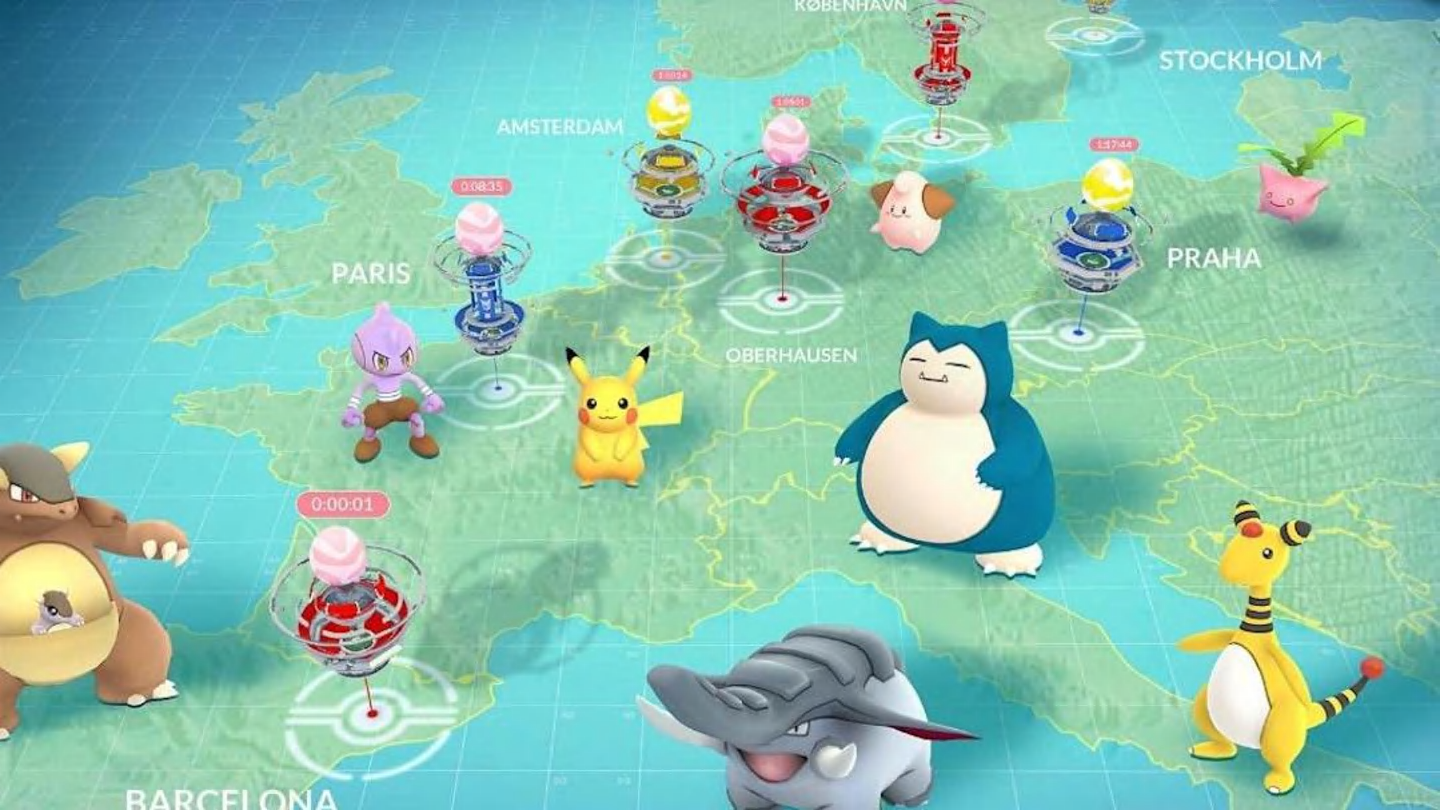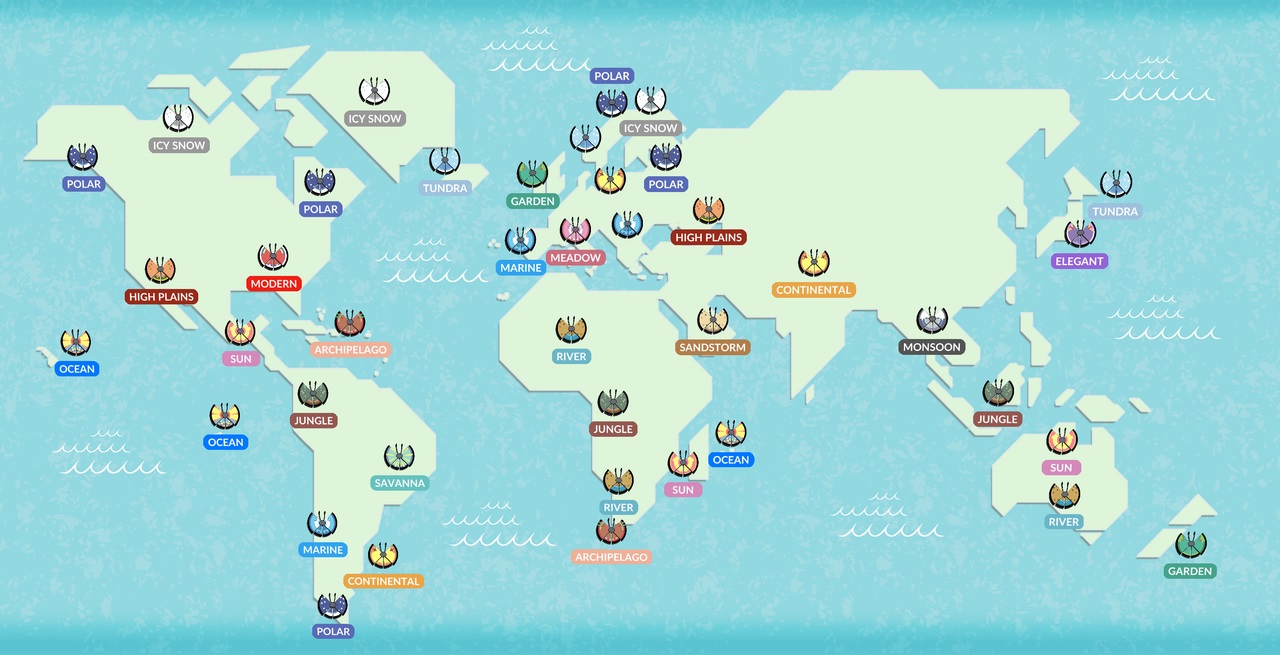
The Pokédex is constantly growing collection containing information about every known Pokémon. Every Pokémon Go and series player aims to complete this database fully. In the main games, exclusive Pokémon can be obtained only by trading with someone who owns the other version. In Pokémon Go, the challenge lies in spatial limitations.
What are regional Pokémon in Pokémon GO?
It’s interesting to note that just as you wouldn’t find wild kangaroos in Austria, it’s also unlikely to encounter a Kangaskhan there. Similarly, it’s hard to imagine Tropius living in Canada. In essence, some Pokémon are specific to certain parts of the world, and these are referred to as regional Pokémon.
To get hold of these particular Pokémons, you’ll need to either journey personally to those locations or collaborate with someone who has been there. On special occasions, regional Pokémons may become accessible globally for a brief duration. These instances are scarce and it’s advisable not to miss them if your goal is to complete your Pokédex thoroughly.
All regional Pokémon locations – Pokémon GO
In the current version of Pokémon GO, over 40 regional Pokémons are available, along with a unique situation we’ll delve into later. Here’s how you can locate each and every one of them.
Gen 1 Pokémon
- Kangaskhan: Australia
- Mime Jr. & Mr. Mime: Europe
- Farfetch’d: East Asia
- Tauros: North America – large parts of the US, Southern Canada, and Northern Mexico.
Gen 2 Pokémon
- Corsola: Equatorial coasts between 31° North and 26° South
- Heracross: Central and South America – northernmost sightings are reported in Texas.
Gen 3 Pokémon
- Volbeat: Europe, Asia, Australia
- Illumise: Americas and Africa
- Lunatone: Americas and Africa
- Torkoal: Asia and India – reports suggest an area stretching between Iran and Vietnam.
- Relicanth: New Zealand
- Zangoose: Europe, Asia, and Australia
- Solrock: Europa, Asia, and Australia
- Tropius: Africa and the Middle East – northernmost sightings are reported in Southern Spain.
- Seviper: Americas and Africa
Gen 4 Pokémon
- Pachirisu: Alaska, Canada, Northeast Asia
- Chatot: Southern Hemisphere
- Shellos (West Sea): Western Hemisphere
- Shellos (East Sea): Eastern Hemisphere
- Mime Jr.: Europe
- Uxie: Americas – 5-Star Raids
- Azelf: East Asia, Australia – 5-Star Raids
- Mesprit: Europe, Middle East, India, Africa – 5-Star Raids
- Carnivine: Southeastern US
Gen 5 Pokémon
- Basculin (Blue-Striped): Western Hemisphere
- Basculin (Red-Striped): Eastern Hemisphere
- Bouffalant: Area around New York, Boston, Philadelphia
- Durant: Western Hemisphere
- Heatmor: Eastern Hemisphere
- Pansear: Europe, Middle East, India, Africa
- Panpur: Americas
- Pansage: East Asia and Australia
- Throh: Western Hemisphere
- Sawk: Eastern Hemisphere
- Sigilyph: Egypt, Greece, Israel
Gen 6 Pokémon
- Klefki: France and Southern England
- Flabébé (Red): Europe, Middle East, Africa
- Flabébé (Blue): Asia-Pacific
- Flabébé (Yellow): Americas
- Furfrou (Diamond): Europe, Middle East, Africa
- Furfrou (Star): Asia-Pacific
- Furfrou (La Reine): France
- Furfrou (Kabuki): Japan
- Furfrou (Pharaoh): Egypt
- Furfrou (Debutante): Americas
- Hawlucha: Mexico
Gen 7 Pokémon
- Comfey: Hawaii
- Oricorio (Baile Style): Europe, Middle East, Africa
- Oricorio (Pom-Pom Style): Americas
- Oricorio (Pa’u Style): African, Asian, Pacific, Caribbean Islands
- Oricorio (Sensu Style): Asia-Pacific
- Kartana: Northern Hemisphere – 5-Star Raids
- Celesteela: Southern Hemisphere – 5-Star Raids
- Blacephalon: Western Hemisphere – 5-Star Raids
- Stakataka: Eastern Hemisphere – 5-Star Raids
- Buzzwole: Americas
- Pheromosa: Europe, Middle East, Africa, India
- Xurkitree: Asia-Pacific
Gen 8 Pokémon
- Stonjourner: United Kingdom
Gen 9 Pokémon
- Tatsugiri (Curly): Europe, Middle East, Africa
- Tatsugiri (Droopy): Americas
- Tatsugiri (Stretchy): Asia-Pacific
Catching Vivillon – Pokémon GO
In a unique twist for these creatures known as Scatterbug, Spewpa, and Vivillon, their capture method is an exceptional case that makes use of the previously underutilized Postcard feature in Pokémon GO. Unlike most other Pokémon, Scatterbug doesn’t appear in the wild, eggs, or raids. Instead, you can only encounter them by placing specific Postcards in your collection. The location where these Postcards originated will determine which of the many patterns for this particular Pokémon you’ll discover.
18 different Vivillon patterns are available in Pokémon GO:
- Archipelago
- Continental
- Elegant
- Garden
- High Plains
- Icy Snow
- Jungle
- Marine
- Meadow
- Modern
- Monsoon
- Ocean
- Polar
- River
- Sandstorm
- Savanna
- Sun
- Tundra

As a gamer, I find myself consulting this map frequently to identify which patterns correspond to specific regions. To encounter a Scatterbug from a certain region, I need to gather three of its unique postcards and affix them to my collection album. For a second encounter with the same region’s Scatterbug, I require nine postcards. Each subsequent chance to catch that region’s Scatterbug will cost me 15 postcards. Luckily, I can add up to three postcards to my album every day. If I need to free up some space in my album, I can easily unpin the postcards as well.
If you want to obtain all patterns of Scatterbug’s transformation into Vivillon, collectors will need to accumulate a total of 125 candies: first, transforming Scatterbug into Spewpa with 25 candies, and then evolving Spewpa into Vivillon with an additional 100 candies. This could be quite challenging for those aiming to collect them all.
Read More
- How to Unlock Stellar Blade’s Secret Dev Room & Ocean String Outfit
- Quantum Bubble Bursts in 2026? Spoiler: Not AI – Market Skeptic’s Take
- Bitcoin’s Tightrope Tango: Will It Waltz or Wobble? 💃🕺
- Persona 5: The Phantom X – All Kiuchi’s Palace puzzle solutions
- Wildgate is the best competitive multiplayer game in years
- Three Stocks for the Ordinary Dreamer: Navigating August’s Uneven Ground
- CoreWeave: The Illusion of Prosperity and the Shattered Mask of AI Infrastructure
- Crypto Chaos Ensues
- Dormant Litecoin Whales Wake Up: Early Signal of a 2025 LTC Price Recovery?
- 🚀 Meme Coins: December’s Wild Ride or Just More Chaos? 🚀
2025-07-15 10:47